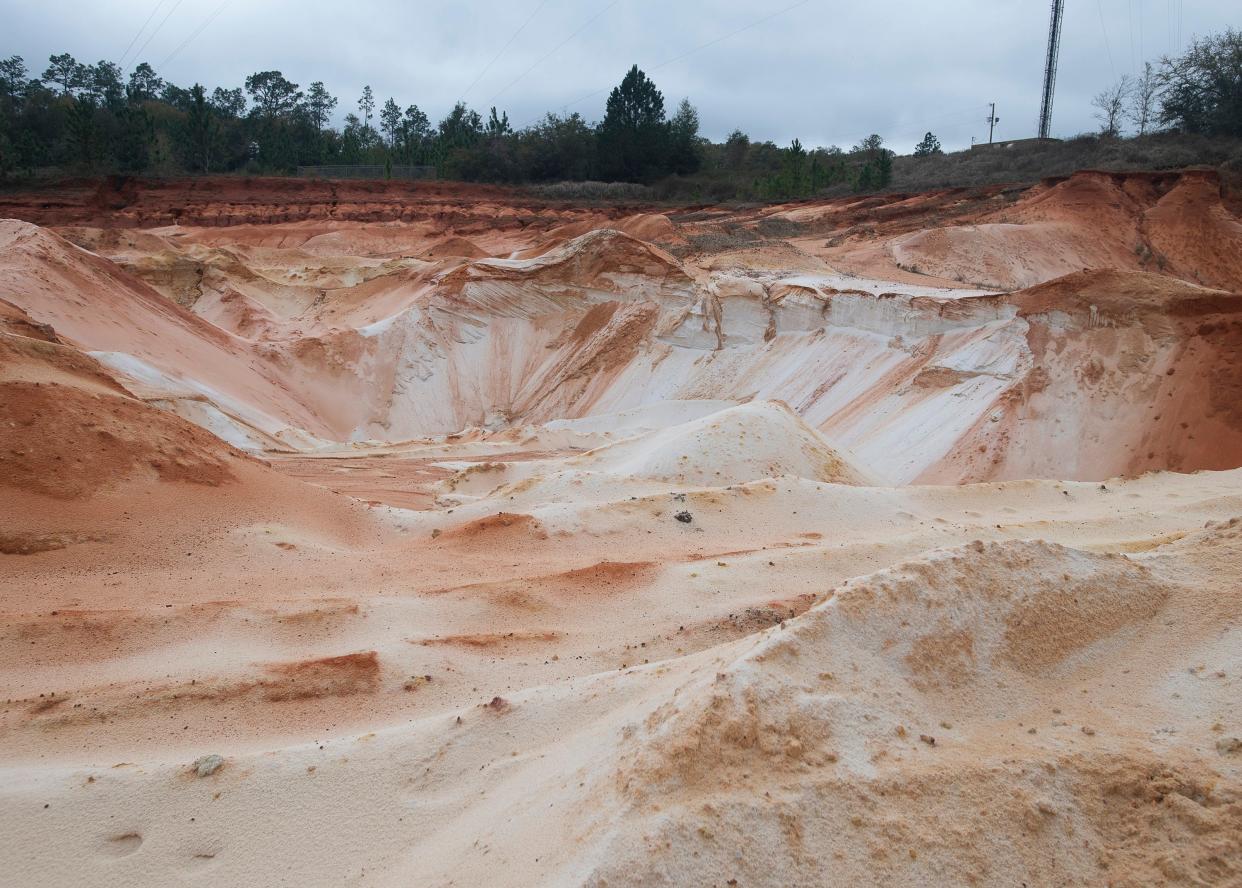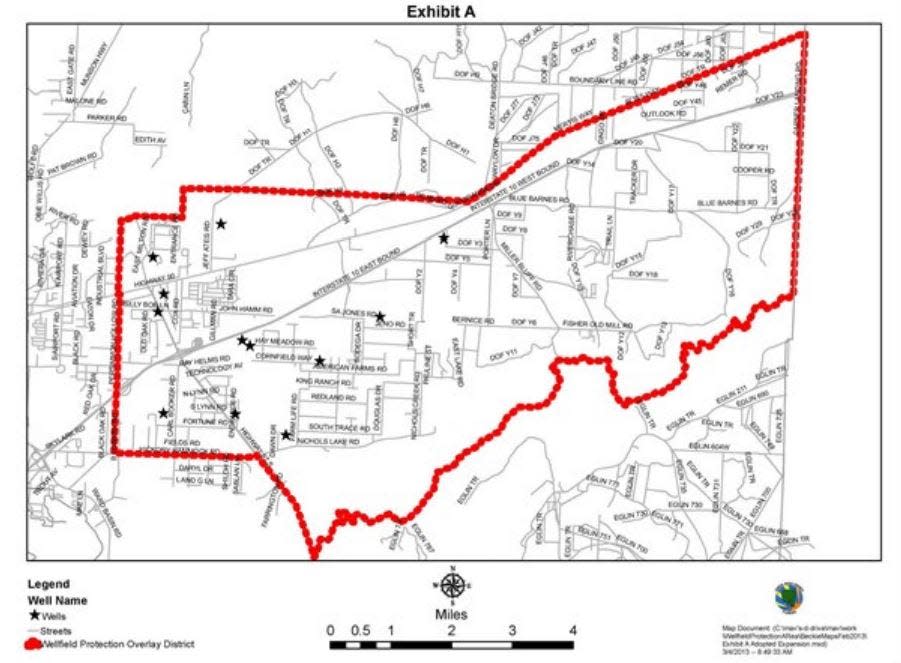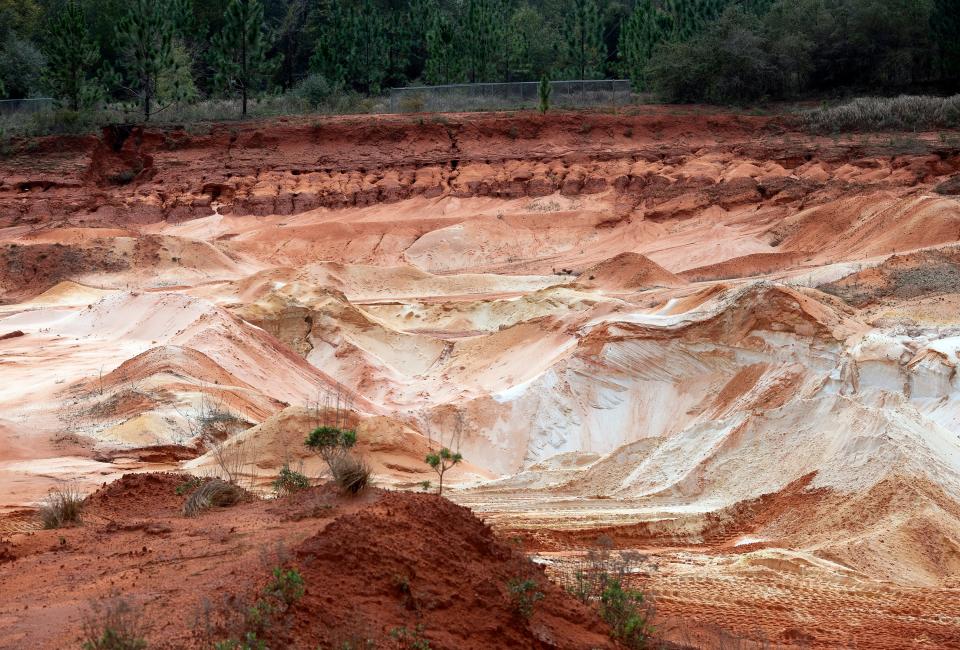Santa Rosa County's water is at risk. Growing area while protecting wellfield no easy task

With Santa Rosa County experiencing exponential growth in the East Milton area, outgoing County Commissioner Bob Cole convened a workshop last week to discuss ways to protect the wellfield that supplies the county's water.
The East Milton Area Wellfield Protection District was established between 2010 and 2013 to protect an area bounded on the south by U.S. 90 and the west by State Road 87. The Fairpoint Regional Utility System and East Milton Water System operate approximately 12 wells within the area from which they draw water from the Sand and Gravel Aquifer.
At present, the wells supply water to more than 85,000 residents.
"This is a very vulnerable aquifer," Gary Eichler, an expert hydrogeologist speaking for Fairpoint Regional, warned commissioners. The aquifer, which is fed by rainwater, is "highly susceptible to contamination from above."
State steps in: Santa Rosa County water protection amendment on hold after state asks for more data
Initial resistance to borrow pits: Could change to Santa Rosa Land Development Code threaten clean water for half the county?

The threats to the water are many and growing. East Milton Water System Director Cleo Heath said seven subdivisions have been approved for development in the area and Cole said a handful of new gas stations are seeking to install underground tanks to hold fuel.
Eichler said even with improvements to the containers that are placed under service stations, the risk for soil contamination around them still exists, and the authorities who monitor pollution levels around community water systems are constantly reducing the "maximum contaminant levels" of a long list of pollutants they'll allow in drinking water.
"It's a resource you should take extraordinary measures to protect," Eichler said. "If you don't get it right and something gets into that wellfield and into your system, it's going to be a very expensive problem to remedy. You don't have too many alternatives to your alternative water supply."
The county was required to increase its reliance on the Sand and Gravel Aquifer and upland wells as saltwater intrusion began impacting water pulled from the Floridan Aquifer in coastal areas.
Better buy that house now: Impact fees discussion likely back in 2023 in Santa Rosa County
What's next in 2023?: Santa Rosa could revise land development code again in 2023

Cole said he called the meeting because he wanted to consider ways to better the Wellfield Protection Ordinance and provide a format in which to educate citizens and incoming county commissioners on the ordinance and the water issues facing the county.
While commissioners spent a good portion of the two-hour workshop hearing about how vulnerable the county's existing water supply is, an attorney representing a local couple seeking to build a new borrow pit inside the East Milton Wellfield Protection Area argued their case.
There are already 10 existing borrow pits within the protective overlay. An effort to expand some of them in 2020 drew heated resistance from the community.
Borrow pits, it was argued then and again Thursday, are a potential source of aquifer contamination. The pits are dug to provide soil utilized by developers, and natural debris such as trees, roots and plants from land clearing efforts are then put back into the holes.
Eichler was not a fan of the idea.
"If you remove 10 or 15 or 20 feet of soil, you're really taking away the first line of defense for your aquifer. ... There's nothing to slow down contamination," Echler told commissioners Thursday. "If you dump something in an open pit, it's in to your aquifer."
In 2020, three still sitting county commissioners, Cole, Sam Parker and James Calkins, voted to revise the language of the county comprehensive plan to allow borrow pit owners to expand the size of their pits within the Wellfield Protection Area.
The plan was nixed when state agencies found the county hadn't produced sufficient scientific evidence to justify the change in the comprehensive plan.
But the state didn't step in before a citizens' group calling itself the Watershed Protection Committee was formed to, as founder Jerry Couey said at the time, "make sure that we better the waters across Santa Rosa County.”
The group was represented Thursday by Carmen Reynolds, who closed her 10-minute discussion of the threats the Wellfield Protection Area already faces by stating, "we stand unequivocally against the expansion of borrow pits."
Brian Holland, however, the last person to speak at the workshop, said he had attended on behalf of business owners Sharon and David Phillips. The couple, he said, "own property on which they desire to operate a borrow pit."
Holland argued the county's existing wellfield protection ordinance serves a valid purpose, but one that should be balanced against the individual property rights of landowners. Borrow pits "have value" he said, and the soil removed from them serves a vital role in growing Santa Rosa County.
He said science, not emotion, should dictate whether a borrow pit can do environmental damage. Holland said his clients were willing to cover the cost of doing the research to determine whether a pit would actually harm the county's water supply.
"If you want to ban borrow pits you'd better have the data to back that up," he said.
This article originally appeared on Pensacola News Journal: Santa Rosa County drinking water at risk as area grows, experts say

